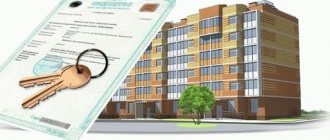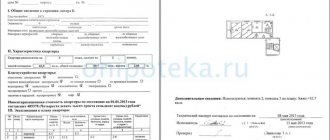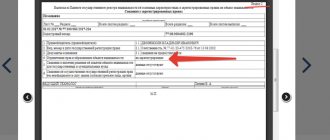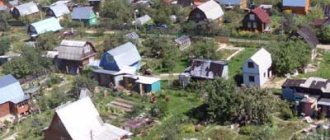What is a conditional cadastral number of a property?
What it is? The conventional cadastral registration number is a method of marking the unique location and characteristics of unique real estate objects within the framework of a universalized registration system throughout the Russian Federation, and previously at the local level.
Until the entry into force of the law on cadastre and cartography (Federal Law 221) in March 2008, the responsibilities for state registration of real estate were performed by the BTI bodies, and cadastre numbering was the responsibility of land management committees and committees responsible for land resources.
In the current conditions, the principles for the formation of numbering according to the cadastre included the following positions, encrypted as numerical segments:
- cadastre identifier for land plots;
- for buildings - inventory or serial numbers;
- for apartments and other premises - serial designation.
During the reform, according to Federal Law 221, the duties of registering rights to real estate and cadastral registration were transferred to the bodies of Rosreestr, cadastral registration of land and buildings was suspended. Instead of cadastral registration, from 2008 to 2012, conventional number designations were assigned.
Since 2012, after the transfer of information on real estate to the database of the Cadastral Chamber, the assignment of number markers according to the cadastre began to occur under the jurisdiction of Rosreestr, most positions in the database were changed from conditional to cadastral numbers, the procedure took place automatically, however, some buildings and plots of land, as well as individual premises, may not yet be taken into account.
That is, a conditional number is a legitimate, outdated form of unique identification of real estate , which has been replaced by centralized principles of marking according to the cadastre by Rosreestr.
The concept of conditional numbering was formed earlier than 2008, on the basis of the 1997 Federal Law on state registration of rights to real estate.
To get a complete picture of how the state real estate cadastre works, we have prepared useful articles for you. We advise you to read information about the principles of the State Property Committee and the composition of information included in the cadastre.
An instruction was drawn up, which noted that conventional number designations are assigned to land or buildings that do not have a cadastral identifier.
How to find out the cadastral number by conditional number - online
You can find out the CN according to the UN in three ways:
- through the Rosreestr website;
- to the MFC branch;
- by contacting the cadastral service.
Moreover, this information is quite easy to obtain on the website and anyone can cope with this task.
On the Rosreestr website
To find out KN online, you will need:
- Go to the official website of Rosreestr.
- Select the “Services” section.
- Follow the link “Reference information on real estate objects online.”
The user will be redirected to a page where they will need to fill out a special form. To do this, you need to select “Conditional number” in the column of numbers by which reference data is searched and enter it.
In addition to the digital one, there is also an analogue way to obtain information from the GKN database if a conditional one is available. In this case, you should contact either the MFC or directly the cadastral service.
You can find out background information on the website about a real estate property, including KN, if you have:
- previously assigned time code;
- addresses where the property is registered;
Contacting the cadastral service
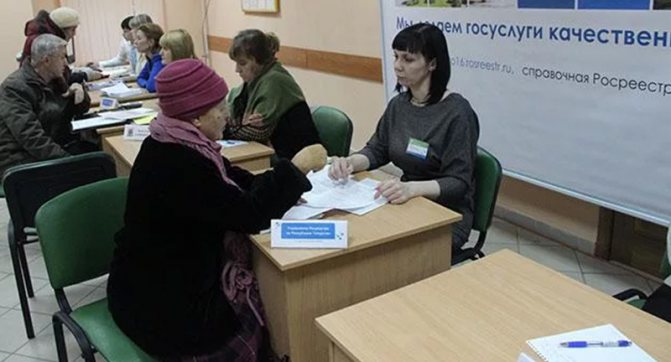
If it is not possible to find out the CN online, you can do this by contacting a government department. To do this, you will need to contact one of the regional branches of Rosreestr and provide the following package of documents:
- Application for obtaining CN in the presence of UN.
- Copies of documents confirming ownership of real estate.
- A document confirming payment of the state duty for the provision of services (receipt).
The state fee is 150₽. The request for data release is processed within 5 days.
Then the applicant is given an extract from the register with the contents, including the KN. It is important that you need to apply for an extract to the branch of Rosreestr in the area in which the registered property is located.
The same procedure can be done at the MFC branch. In this case, it is more convenient to first take a place in the electronic queue for submitting documents.
Why is it needed?
According to the instructions on the procedure for assigning conditional numbers, such designations were required in order to properly record real estate objects within the framework of the Unified State Register when forming the corresponding sections for them.
That is, similar to the cadastral number, the conditional number is needed for such things as:
- determining the amount of state tax assessed on real estate and unique identification of these financial characteristics;
- similar – fixing the cadastral value of a building or land plot;
- information detailing in the formation of urban planning policy - the number serves as a marker of the characteristics of the building to obtain information about acceptable and unacceptable activities with it, the exact location, ownership, etc.;
- for state registration and providing the opportunity to carry out various legal procedures with real estate - sale, donation, commercial use, etc.;
- to regulate disputes arising between citizens;
- to carry out control and audit activities.
The concept of a conditional (cadastral) number
Any real estate objects (property complexes, land plots) have a number of unique physical characteristics. However, the legal status of such objects also contains a unique identification characteristic - a cadastral number (or in the precise wording of the legislation - a state registration number).
The cadastral number is a set of numbers that identify the corresponding sections of the state register of rights to real estate in relation to a specific object. Such a number is unique, belongs to only one object, is unchangeable, and does not repeat in time and location on the territory of the Russian Federation.
The assignment of a cadastral number is carried out as part of cadastral activities. For the purpose of assigning state registration numbers, the entire territory of the country is divided into cadastral districts, districts and quarters (cadastral division units). Each such unit has its own numerical designation, which is used in the cadastral number. In addition, the content of the cadastral number includes a digital link to a specific section of the Unified State Register, containing all the data regarding the rights to a given object (existence of rights, transfers of rights between subjects, etc.). It is important to note that the transfer of the right to an object to another entity does not entail a change in the cadastral number; it remains unchanged and unique.
A number is assigned to each object when registering it, as well as if information about the rights to a previously registered object is included in the Unified State Register. Rosreestr, represented by its territorial bodies, is responsible for assigning cadastral numbers.
Since a cadastral number is assigned to an object that has undergone cadastral registration, the concept of a conditional number is used in relation to objects that have not undergone such a procedure. Previously, a conditional number was assigned only to property complexes (buildings, structures).
According to the Federal Law “On the State Real Estate Cadastre”, all objects must receive a cadastral number. At the moment, if an object has not undergone cadastral registration, a conditional number remains valid for it, which in practice has the same legal consequences as a cadastral number. In title documents, the period indicating this number is as follows: conditional (cadastral) number.
The only case when changes to the cadastral number are allowed is the establishment or change of units of cadastral division of the territory of the Russian Federation. In this case, after entering the updated data into the State Property Committee, the cadastral registration authority will make a corresponding change to the object number.
Where is it indicated?
A conventional cadastral designation may be found in outdated but still valid property documents, Unified State Register and BTI documentation, town planning and municipal documents and other documentation provided for by law and regulations.
IMPORTANT: the law does not provide for a change in conditional numbers taking into account the transition to cadastral ones, that is, such a number does not change in the event of a change in ownership of land or a building, a change of owner and in other circumstances.
If a qualitative change occurs - that is, a building is destroyed, changes the region or designation within the land plot (when merging or dividing them), the number also does not change, but a new, temporary marker of a conditional type can be assigned.
Differences between cadastral and conditional numbers
We will further denote the cadastral and conditional number as KN and UN.
- Their main difference is that UC has not been issued for real estate since 2001; instead, CN is indicated in the documents. This does not mean that documents with the old number need to be changed; it still retains its significance today and is stored in the archives of the registration authority, but has no legal force. He will not be accepted by banks, courts and government agencies.
- The UN was assigned from 1992 to 2000 on the day when the ownership of the object was registered with government agencies, and was indicated in the certificate. But, unlike the KN, not any real estate received it, but only houses, apartments or non-residential buildings.
The composition of the rooms is also different. UN includes 6 - 7 groups of numbers, and KN consists of 4 - 6 groups. Despite the fact that there are more numbers in the UN, it carries less information and does not always allow one to understand the exact position of the object.
Groups of UN characters are separated by a hyphen and a slash. The first digits are the number of the subject of the Russian Federation, the second two are the registration district. The remaining characters indicate the year of registration, the code of the registering unit, the book number, and the serial number of the entry in the account book.
In KN the numbers have a slightly different meaning. The first two digits indicate a subject of the Russian Federation, the next two indicate a municipal entity, then there are six digits defining the cadastral quarter, and four indicating a specific site.
What is included in the ID?
The conditional number, according to the rules of the “Assignment Procedure...” has the following form:
AA-BB-VV/VVV/VVVV-YYY
The decoding is as follows:
- AA – number designation of a subject of the Russian Federation;
- BB – number designation of the district as part of the designation procedure;
- ВВ/ВВВ/ВВВВ – accounting book numbering for incoming documents of the corresponding service, where:
- BB – numbering of the relevant department responsible for the state. registration of the right of a territorial body;
- /ВВВ/ – serial number assigned to the accounting book for incoming documentation;
- ВВВВ – number designation of the year during which the book was kept.
- YYY is a serial number in relation to a specific entry for an object in the book.
additional information
In addition to the information of the corresponding entry in the Unified State Register, using the conditional cadastral identifier you can obtain open information similar to the information that the law allows to be provided within the framework of the cadastral identifier:
- the name assigned to a private house or apartment building;
- the address at which it is located;
- number, according to the cadastral registration carried out;
- general information about the owner - full name. owners of physical persons, names of legal entities. persons for all registered in the register;
- calculating the cost of a building using the cadastral method;
- the type of law operating in relation to the object at the time of the request (ownership, lease, etc.);
- restrictions and encumbrances regarding the structure, including restrictions on the method of use (residential, commercial, industrial, etc.);
- encumbrances, the presence of arrests, the position of the property as collateral, and other problematic factors related to the house.
